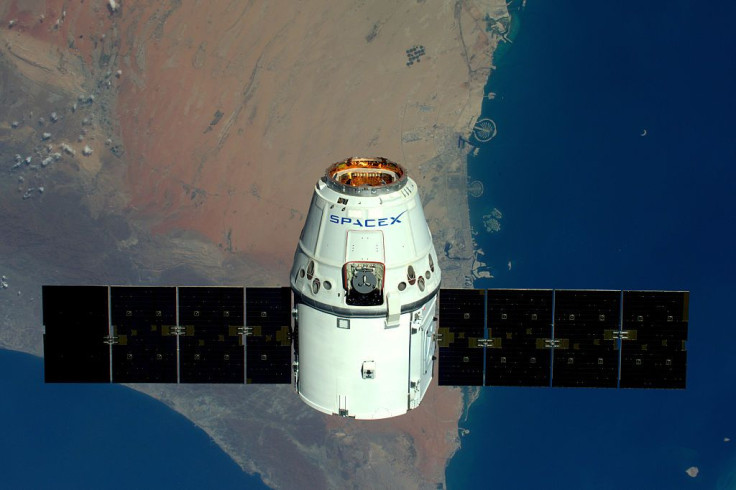Elon Musk Shows Photo Of 60 SpaceX Satellites To Launch On May 15

SpaceX on May 15 will make history by launching a jaw-dropping 60 Starlink small satellites, the second largest number of satellites ever deployed in one launch mission by any country or company. The mission is scheduled to blast-off at 10:30 pm EDT (02:30 UTC) from Cape Canaveral, Florida.
SpaceX CEO Elon Musk tweeted this incredible number along with the first official photo of the satellites. He said the Starlink satellites are flat-packed inside the payload fairing (or nosecone) of a Falcon 9, and there’s no dispenser for deploying them into Low Earth Orbit (LEO).
“First 60 @SpaceX Starlink satellites loaded into Falcon fairing. Tight fit,” tweeted Musk on Sunday.
First 60 @SpaceX Starlink satellites loaded into Falcon fairing. Tight fit. pic.twitter.com/gZq8gHg9uK
— Elon Musk (@elonmusk) May 12, 2019
This mission has been designated Starlink v0.9. The 60 satellite payload weighing more than 13,000 kg (30,000 lbs.) will also be the heaviest ever launched by SpaceX. Each satellite weighs from 200 kg to 300 kg.
The photo tweeted by Musk shows each Starlink satellite has the appearance of a small rectangle with a flat top and bottom. The square dispenser seems to have four separate quadrants for the satellites.
Musk later tweeted that “much will likely go wrong” on this first mission on May 15. He said SpaceX will need “6 more launches of 60” satellites per launch to get “minor coverage” for the internet network. A dozen launches, or 720 satellites, are needed “for moderate” coverage,” according to Musk.
More details on day of launch, currently tracking to Wednesday
— Elon Musk (@elonmusk) May 12, 2019
Experts said the style of dispenser and payload adapter on this mission has never been used before. They also marvel at how SpaceX was able to cram such a large number of satellites into such a small space with a lot of room to spare. The dispenser with its 60 sats occupies only two-thirds of the fairing.
All the satellites in this payload, however, are beta or test satellites with limited capabilities. The Starlink satellites that will provide commercial internet access worldwide will be launched in upcoming missions.
SpaceX President and COO Gwynne Shotwell said the Starlink v0.9 satellites are extremely close to SpaceX’s true final design.
SpaceX still considers these 60 satellites a “test batch.” These birds won’t have the optical (laser) interlinks needed for Starlink’s unique constellation design.
The full Starlink constellation will consist of 11,943 satellites at various altitudes in LEO, which is defined as a geocentric orbit with an altitude of 2,000 km (1,200 miles) or less. NASA estimates there are currently 2,600 satellites at various orbits around the Earth, as well as 6,200 pieces of space junk. Most of these satellites are in LEO.
SpaceX, however, has released scant information about the Starlink satellites and its constellation. It’s revealed the Starlink satellites are designed to be “completely demisable” when they burn-up in the Earth’s atmosphere at the end of their useful lives.
This means there is “zero” risk any pieces of Starlink will hurt anyone on the ground after the satellites are destroyed on re-entry, says SpaceX.
© Copyright IBTimes 2025. All rights reserved.





















